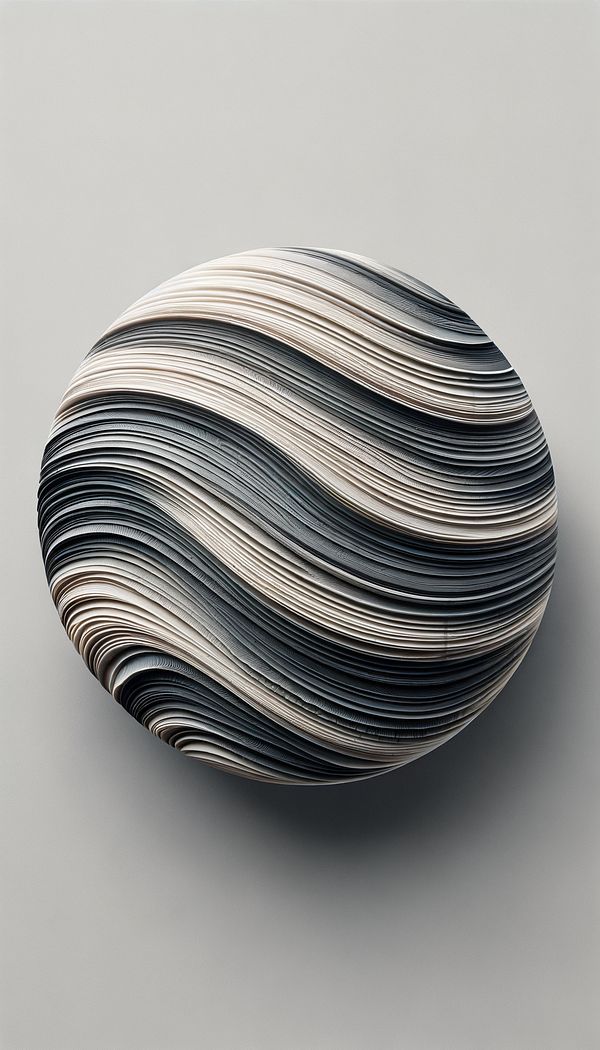What is Combing?
Combing is a textural paint technique that creates a striped or combed pattern.
Description
Combing is a decorative paint technique that involves dragging a combing tool through wet paint or glaze to create a series of lines or stripes, forming a distinct texture and pattern on the surface. This technique can be executed using a variety of tools, including special combing tools with different teeth sizes, trowels, or even homemade tools like cardboard edges or squeegees. The effect of combing can vary greatly depending on the tool used, the direction of the strokes, and the thickness and consistency of the paint or glaze.
The combing technique adds depth, interest, and movement to walls, furniture, or any applicable surface and can be adapted to fit many decorative styles, from the subtle and sophisticated to the bold and dramatic. It is particularly popular in creating faux finishes that mimic the appearance of wood grain, fabric textures, or other natural elements. Depending on the colors and the base coat used, combing can enhance the overall aesthetic of a room, contributing to its texture and color theory.
Mastering the combing technique requires practice, as the timing and pressure applied play a critical role in achieving the desired finish. It's a rewarding process that adds a personal touch and unique flair to interior spaces, making it a favored choice among DIY enthusiasts and interior design professionals alike.
Usage
Combing is commonly used in interior decoration to create visual texture on walls and furniture. It’s particularly effective in spaces that aim for a tactile experience or wish to evoke a sense of depth and complexity. For example, a living room wall might be treated with combing to simulate the look of striped wallpaper using only paint, or a piece of wooden furniture might be embellished with combing to mimic a fine wood grain.
FAQs
-
How do you choose the right tool for combing?
The choice of tool for combing depends on the desired size and definition of the stripes or textures you want to create. Fine-toothed combs produce delicate lines, ideal for subtle textures, while coarser tools create bold, dramatic stripes. The material and flexibility of the tool can also affect the end result.
-
Can combing be done over any paint type?
Combing is most effective over semi-gloss or gloss paint or glaze because these finishes allow the tool to glide more smoothly, producing cleaner lines. Matte paints can be used, but they may offer more resistance and result in less defined combing effects.
-
Is it necessary to practice the combing technique before applying it on a final surface?
Yes, practicing the combing technique is highly recommended to get a feel for the tool and the pressure required. Experiment on cardboard or scrap wood to refine your skill and ensure the desired outcome before applying it to walls or furniture.
Practical Application
To achieve a successful combing finish, apply a base coat and let it dry completely. Then, apply a coat of glaze or paint in your chosen color. While this layer is still wet, drag your combing tool through the paint at a consistent angle and pressure to create the pattern. You can experiment with different directions and overlaps to produce various effects. Practicing beforehand will help perfect your technique and outcome.
-
Design Styles478 articles
-
Decorative Techniques322 articles
-
Color & Patterns154 articles
-
Wall Treatments & Finishes157 articles
-
BalustradeA balustrade is a row of small columns topped by a rail.
-
MoldingMolding is the use of decorative strips to enhance architectural features and spaces.
-
StencilA template used to draw or paint identical letters, symbols, shapes, or patterns every time it is used.
-
Console TableA console table is a narrow, long table typically placed against a wall.
-
TwillTwill is a type of textile weave characterized by a diagonal pattern.
